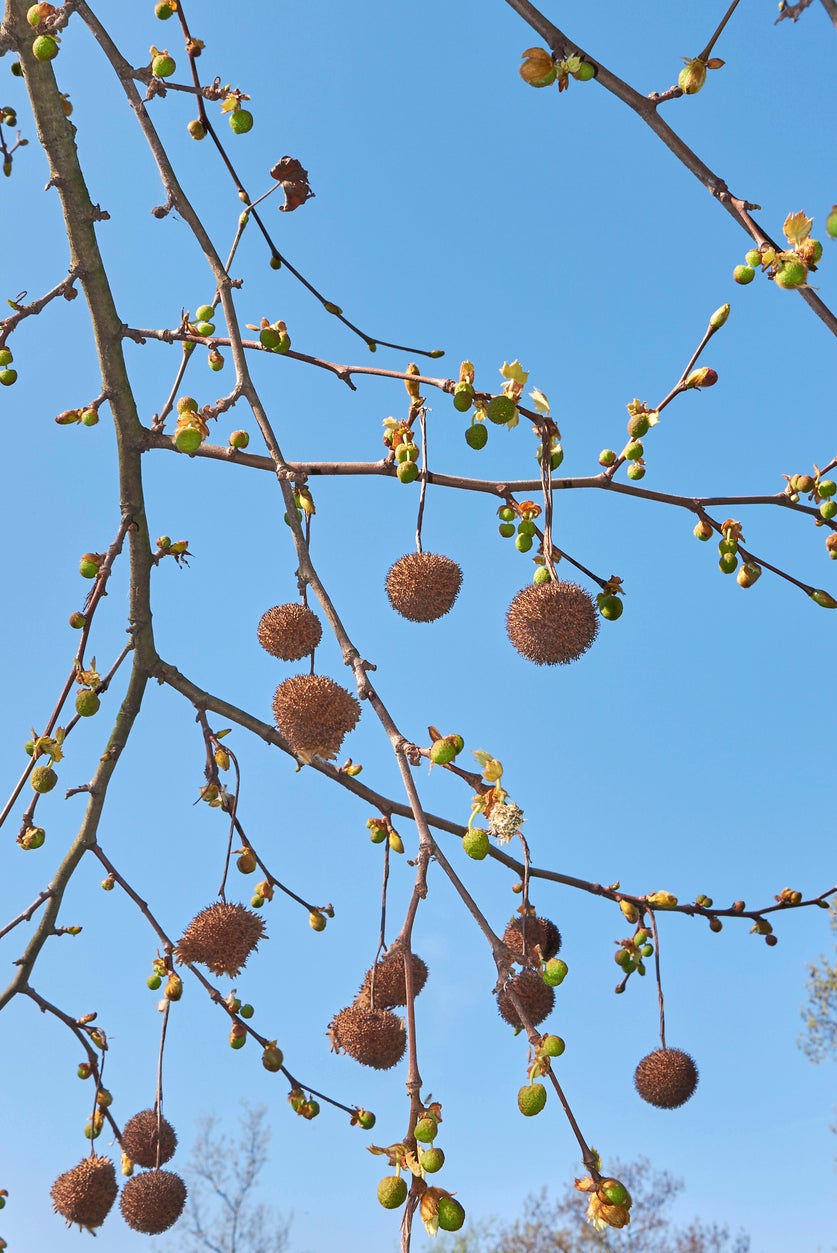Plane Tree Seed Saving: When To Collect Plane Tree Seeds


The London plane tree, the plane tree, or just the sycamore, are all names for the large, elegant shade and landscape trees most well-known for scaly, multi-colored bark. There are several species of plane tree, but they are all tall and attractive and desirable to have in yards. Harvesting plane tree seeds isn’t difficult, and with good care you can grow them into healthy trees.
About Plane Tree Seeds
The seeds of the plane tree can be found in the fruiting balls that develop from female flowers. They are also known as the fruit or the seed pods of the tree. The balls typically mature mid-fall and break open to release seeds in early winter. The seeds are small and covered in stiff hairs. There are many seeds in each fruiting ball.
When to Collect Plane Tree Seeds
The best time for plane tree seed collection is in late fall, around November, just before the seed pods start breaking up to disperse seeds. This requires picking the fruiting balls directly from the tree, which may be problematic if the branches are too high. Alternatively, you can collect seed pods from the ground if you can find some that are still intact. Collecting is easy if you can reach the seed pods; simply pull the ripe, fruiting balls from the branch, or use clippers if necessary. For the best results in plane tree seed saving, let your seed pods dry in a well-ventilated setting before opening them to get at the seeds. Once they’re dry, crush the balls to get them open and sort through the pieces to collect the small seeds.
Germinating and Planting Plane Tree Seeds
To trigger germination in your plane tree seeds, soak them in water for about 24-48 hours and then sow them in cold frames or indoor seed trays. Keep the soil moist, using a plastic cover for humidity, if necessary, and provide indirect light. In about two weeks, you should have seedlings, but some gardeners and growers report poor germination rates. Use a lot of seeds and thin the seedlings if necessary to have a better chance of getting enough to germinate. Once you have strong, healthy seedlings you can transplant them to pots or to an outdoor spot that can be protected.
Sign up for the Gardening Know How newsletter today and receive a free copy of our e-book "How to Grow Delicious Tomatoes".

Mary Ellen Ellis has been gardening for over 20 years. With degrees in Chemistry and Biology, Mary Ellen's specialties are flowers, native plants, and herbs.